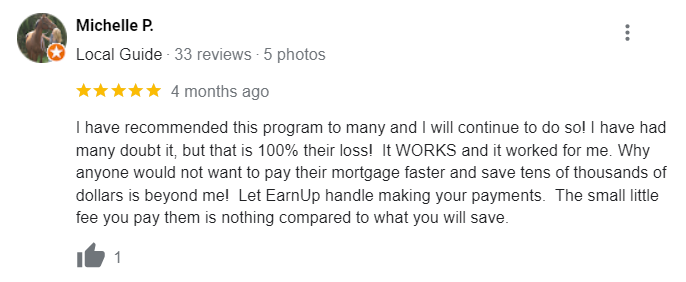Have you ever wondered, what is inflation? It’s a term we hear a lot, especially during tough economic times. Simply put, inflation is the rate at which prices for goods and services increase over time. When there’s inflation, your dollar doesn’t go as far as it used to. Things cost more, but your paycheck might not be keeping up.
Decoding Inflation: Causes, Impacts, and More
Inflation isn’t a recent phenomenon. Throughout history, there have been many periods of rising prices, some more dramatic than others. And with that, many people questioning, “What is inflation?” For example, after World War II, pent-up demand and supply chain issues contributed to double-digit price inflation in the United States, reaching a peak annual inflation rate of 20 percent in 1947. More recently, you may remember June 2022 when inflation in the United States jumped to 9.1 percent, the highest it’s been since February 1982. This surge, reported by Bloomberg, was largely due to increased money supply, supply disruptions brought on by the pandemic, and rising costs for essential things like raw materials. Thankfully, it has since slowed, returning to levels more in line with historical trends, as McKinsey research indicates.
What Causes Inflation?
Although there can be multiple factors at play, inflation generally boils down to either “demand-pull” or “cost-push” inflation.
Demand-Pull Inflation:
Imagine everyone suddenly has more money to spend, but there aren’t enough goods and services to go around. That’s demand-pull inflation – demand outpaces supply, causing price increases. You see this in situations like a booming economy or after government stimulus measures. When this occurs, it is referred to as demand-pull inflation occurring.
Cost-Push Inflation:
This one’s about rising production costs. When the prices of things like raw materials, labor, or energy go up, businesses often have no choice but to raise the prices of their products or services to maintain their profit margins. This increased cost gets passed on to consumers, resulting in cost-push inflation. Oil prices are a great example of something that impacts cost-push inflation. When oil prices rise, so too do the costs of producing and transporting goods. This can lead to higher prices for a wide range of products, from gasoline to groceries.
How Does Inflation Affect You?
Inflation affects both consumers and companies. As prices go up, the purchasing power of your money decreases. This means your paycheck doesn’t stretch as far, and you end up paying more for things you need, from groceries and gas to rent and healthcare.
Let’s say you loved buying that fancy coffee every morning. Suddenly, the price jumps. Your daily indulgence becomes a luxury. Maybe you choose a cheaper alternative or give it up entirely. Inflation can force people to make tradeoffs, and this can spark frustration.
For businesses, higher prices for supplies and materials can squeeze their profits. Natural disasters, for instance, can disrupt production and lead to higher prices for raw materials. This might lead to decisions about raising prices, finding alternative suppliers, or even reducing staff. As inflation ripples through the economy, it influences both spending patterns and business decisions.
Is Inflation Always Bad?
Not necessarily. A small amount of inflation, around 2%, is generally considered healthy for a growing economy. This is referred to as the inflation rate. It can encourage businesses to invest and consumers to spend, which contributes to economic growth and financial stability. But when inflation runs rampant and becomes unpredictable, that’s when things get tricky for budgeting, planning, and maintaining a healthy financial life. High levels of inflation, particularly if sustained over a long period, can erode consumer confidence and lead to uncertainty in business planning.
Taming Inflation: The Role of Monetary Policy
So, how do we keep inflation in check? That’s where monetary policy comes into play. Central banks, often referred to by many as the central bankers, like the Federal Reserve have tools they can use to influence the economy and inflation.
One of their primary weapons is the Monetary Policy Committee, which sets interest rates. By raising interest rates, they make borrowing money more expensive. This can cool down an overheating economy, discourage spending, and curb inflation. When the Monetary Policy Committee makes a decision about the inflation rate, it takes many factors into consideration, with a key goal of maintaining stability.
Decoding the CPI: What is it, and How Does it Affect You?
One way experts measure inflation, or inflation measures as some call it, is by tracking the Consumer Price Index (CPI). Government agencies are responsible for calculating and publishing these figures, which are used to track inflation trends and make informed economic decisions. This measures the average change in prices that urban consumers pay for a “basket” of everyday goods and services over a certain period, like food, housing, transportation, and healthcare.
The CPI tells you how much more (or less) that basket of goods and services costs today compared to a specific past point in time, also known as a base year. If the CPI increases, it means the cost of living has gone up, and consumers need to spend more to buy the same things they bought before. This situation illustrates a decrease in purchasing power. Essentially, rising inflation means your money doesn’t buy as much as it used to. This is because the prices of goods and services have increased. The CPI is a key economic indicator used to track inflation and assess the cost of living for consumers. Understanding how to interpret CPI data can be valuable for individuals and businesses alike.
Measuring Business Costs: Understanding the PPI
Along with the CPI, economists also look at the Producer Price Index (PPI) to measure inflation at the wholesale level, reflecting what businesses pay for their supplies and materials. This index provides insights into the price pressures faced by producers.
Tracking both the CPI and PPI helps give a comprehensive picture of how inflation is impacting different aspects of the economy. The relationship between the PPI and CPI is complex but understanding both can provide a broader view of inflationary pressures in an economy.
Globalization and the Import/Export Price Indexes
We live in an interconnected world where goods and services flow freely between countries. That’s why economists also pay close attention to Import/Export Price Indexes, which measure the average price change for goods and services traded between a particular country and the rest of the world. These indexes help track how global economic trends and supply chains influence a country’s internal inflation. Changes in global commodity prices, for instance, can significantly impact a country’s import and export prices, ultimately influencing its domestic inflation rate. This interplay highlights the interconnectedness of the global economy.
FAQs about what is inflation
What is inflation in simple terms?
Imagine you buy a bag of apples this week for $5. But next week, that same bag of apples costs $6 because prices have gone up. This is inflation. Basically, your money buys less than it did before.
What causes inflation?
Many things, but some common culprits are a big increase in the supply of money, shortages of essential goods (like during a global pandemic), and rising costs for things businesses need to make their products, like raw materials or labor. In essence, anything that increases production costs can contribute to inflation.
Why is US inflation so high?
The US saw high inflation in 2022, but it’s starting to ease now. Several things contributed to it, including the impact of COVID-19, supply chain snags, government stimulus measures that increased money supply, and higher energy prices, among others. The combined effect of these factors led to a surge in prices across various sectors of the economy.
Is inflation good or bad?
It’s a bit of both. A little inflation (around 2%) can be healthy as it encourages spending and growth. But high inflation erodes your purchasing power and makes it hard to plan financially. Super-high or unpredictable inflation is bad news for economies.
Conclusion
Learning what is inflation is important for navigating personal finances. As you’ve seen, inflation affects what you can buy with your income, the cost of everyday items, and even how businesses operate. Staying informed about inflation trends, their causes, and their impacts can help you make better choices and feel confident in managing your money. With a clearer picture of what is inflation, you’re in a stronger position to make informed financial decisions.










